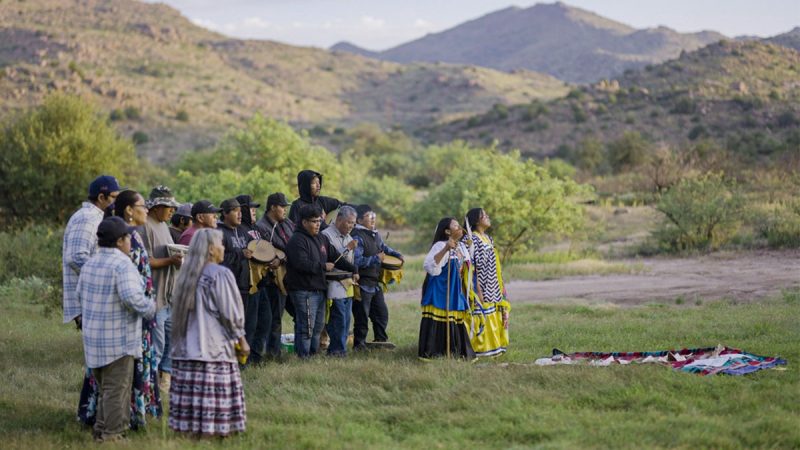The clash between the Apache tribe and the federal government regarding the protection of sacred land has brought a longstanding issue to the forefront. The legal battle has escalated to the Supreme Court, with both sides fiercely defending their positions. This struggle not only embodies the fight for the preservation of Native American culture but also raises important questions about land rights and the balance between economic development and conservation.
The crux of the issue lies in the proposed transfer of federal land in Arizona to a mining company, a move that the Apache tribe vehemently opposes due to the land’s sacred significance. The Apache tribe argues that the federal government failed to consult them adequately, as required by law, before deciding to transfer the land. This lack of consultation reflects a broader pattern of overlooking Native American voices in decision-making processes that impact their lands and communities.
On the other hand, the mining company and the federal government contend that the land transfer will bring economic benefits and job opportunities to the region. The supporters of the transfer argue that economic development should take precedence over cultural and environmental concerns. However, this argument overlooks the intrinsic value of sacred sites to indigenous communities and the importance of preserving cultural heritage for future generations.
The case brings into focus the balancing act between economic interests and the protection of sacred lands and cultural heritage. It raises the question of whether economic development should come at the cost of disregarding the spiritual and cultural significance of land to indigenous peoples. The legal battle underscores the need for a more inclusive and respectful approach to decision-making processes that involve Native American communities.
The involvement of the Supreme Court in this case highlights the broader implications of the dispute. The court’s decision will not only have a direct impact on the Apache tribe and the specific land in question but will also set a precedent for future conflicts between indigenous communities and government agencies. It has the potential to shape the legal framework governing land rights and consultation processes with Native American groups.
In conclusion, the clash between the Apache tribe and the federal government over sacred land brings to light the complex interplay between economic interests, cultural heritage, and environmental conservation. This case underscores the need for a more inclusive and respectful approach to decision-making processes that affect indigenous communities. The outcome of this legal battle will have far-reaching implications for indigenous rights and land protection in the United States.

